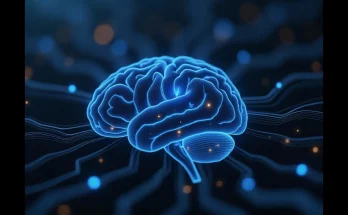Nvidia’s Quantum Leap: Building an AI Superhighway for Quantum Computing
The realm of quantum computing continues to captivate industries and technologists alike as the landscape of computing evolves. At the forefront of this transformation is Nvidia, a powerhouse renowned for its innovations in graphic and parallel processing technologies. In what appears to be a forward-thinking approach, Nvidia recently announced plans for the Nvidia Accelerated Quantum Research Center (NVAQC) in Boston, aiming to blend quantum hardware with advanced AI supercomputers.
What is the NVAQC?
Set to commence operations later this year, the NVAQC is established to facilitate the transition of quantum computing from theoretical experimentation into practical applications. As articulated by Tim Costa, the Senior Director of Computer-Aided Engineering, Quantum and CUDA-X at Nvidia, this initiative is geared towards harnessing the potential of quantum computing in tackling complex problems that remain unsolvable by current technologies.
The Vision of Nvidia
- Integrating quantum elements into existing supercomputing frameworks.
- Utilizing AI to enhance the functionality of quantum computers.
- Accelerating the scalability of quantum computing from hundreds of qubits to potentially millions.
In Costa’s words, “We view this as a long-term opportunity.” This vision emphasizes the long-term growth potential Nvidia anticipates in the fusion of quantum computing and artificial intelligence.
Nvidia and the Quantum Revolution
Nvidia’s transition from graphics processing to AI and quantum computing is marked by its strategic development of the Compute Unified Device Architecture (CUDA). This programming language significantly boosts GPU computing beyond its original scope, allowing developers to exploit the innate capabilities of GPUs for complex computations.
This shift was not without its challenges; Nvidia willingly accepted a reduction in profit margins to democratize access to its CUDA technology, ensuring widespread adoption across various scientific and commercial applications.
Software Synergies for Quantum Computing
The crux of Nvidia’s strategy lies in the belief that accelerated computing, synonymous with massively parallel computations, is essential for future technology. As Costa implies, this approach can drastically alter how computations are approached across industries. By leveraging AI’s capabilities, Nvidia can further the practicality of quantum computing.
The Interplay Between AI and Quantum Computing
Just as GPUs proved invaluable for deep learning in AI, so too do they offer unique advantages for quantum computing. The core units of quantum computing, known as qubits, can perform various calculations simultaneously. This allows Nvidia to capitalize on its GPU technology to enhance quantum computing processes.
Through combining AI and quantum computing, Nvidia is poised to enhance computing capabilities significantly. According to Costa, the real innovation will arrive once quantum computers can scale from current operational levels of approximately fifty to a hundred qubits towards the envisioned million-qubit framework.
Addressing Quantum Errors with AI
While quantum computing introduces exciting possibilities, it is also fraught with challenges, particularly concerning quantum error correction. Quantum operations are susceptible to errors from environmental noise, requiring sophisticated error correction techniques to ensure reliable computation.
- AI techniques such as machine learning and reinforcement learning are being harnessed for error correction.
- Recognizing and avoiding common errors is critical to achieving stable qubit performance.
Collaborations with institutions like the Harvard Quantum Initiative and MIT are essential for refining these AI-driven error correction models at the NVAQC. Nvidia’s advanced supercomputers will play a key role in preparing for these challenging calculations.
The Future of Quantum Computing
As we advance into the next decade, Nvidia’s ongoing endeavors will catalyze a new era of practical quantum computing. The NVAQC is set to not only innovate in quantum technology but also explore its synergetic relationship with AI, resulting in profound implications across various sectors.
In conclusion, Nvidia’s ambitious plans indicate a transformative journey toward integrating AI within quantum computing, leading not just to enhanced processing capabilities but potentially unlocking new realms of problem-solving that have remained out of reach until now.



